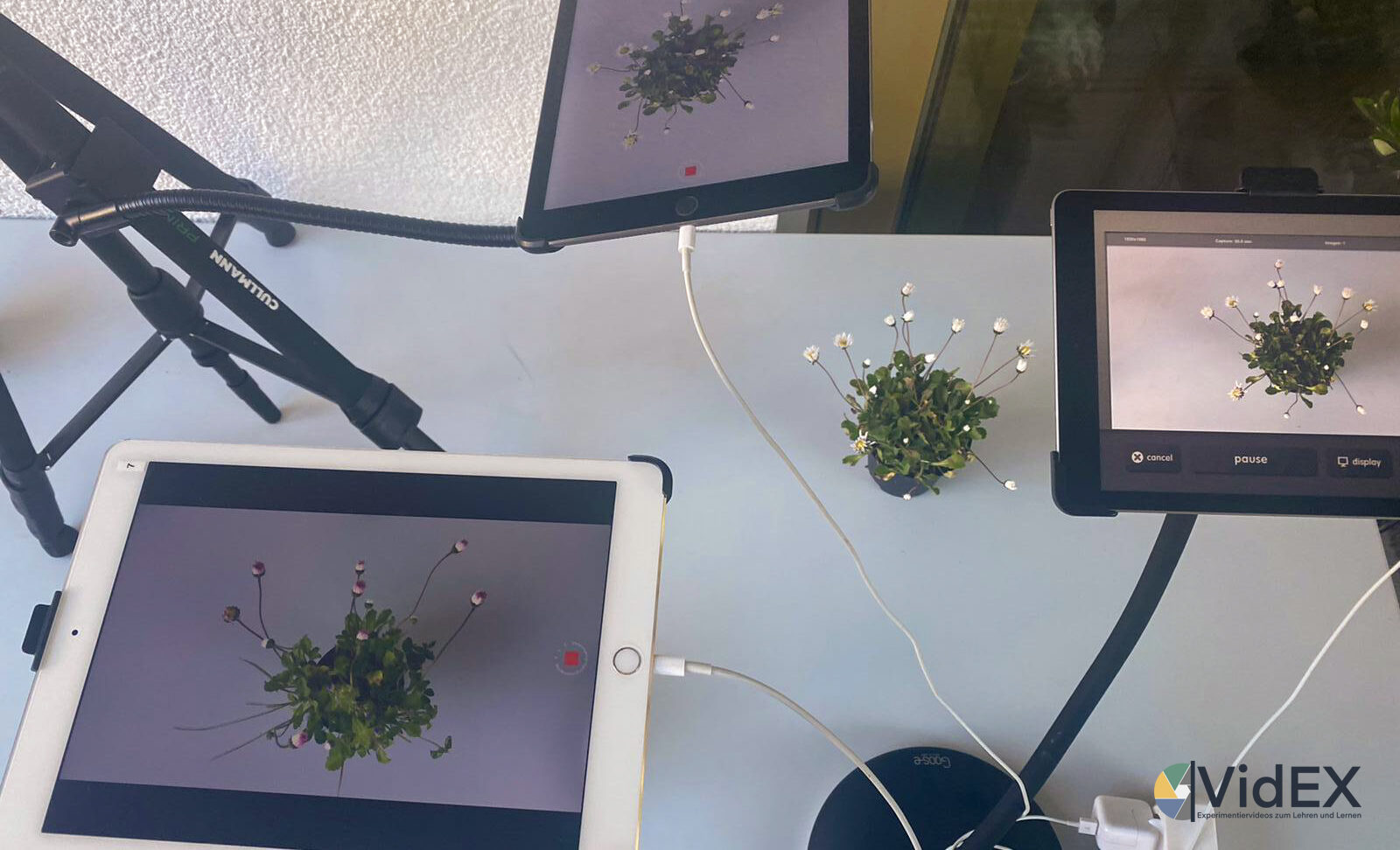
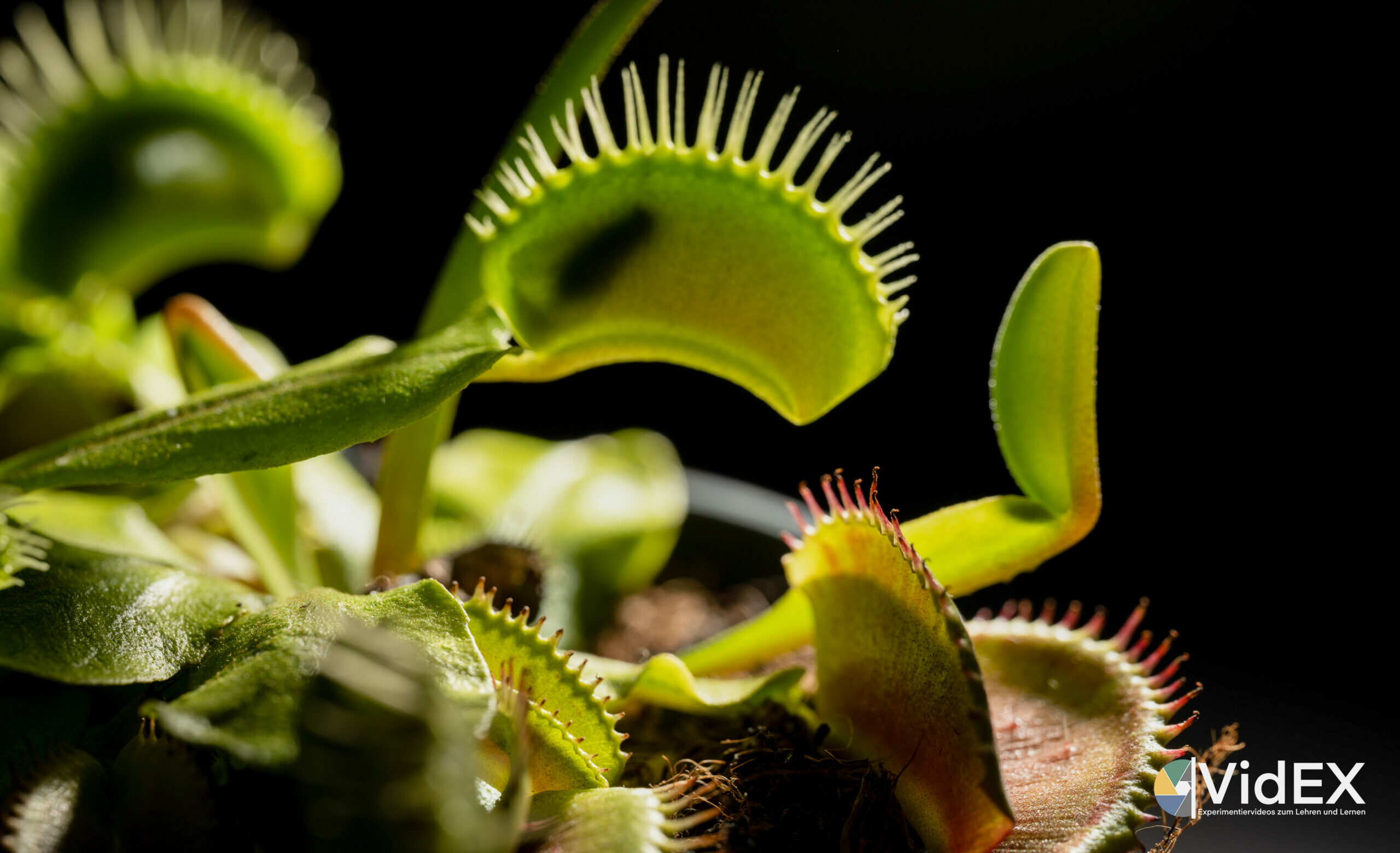
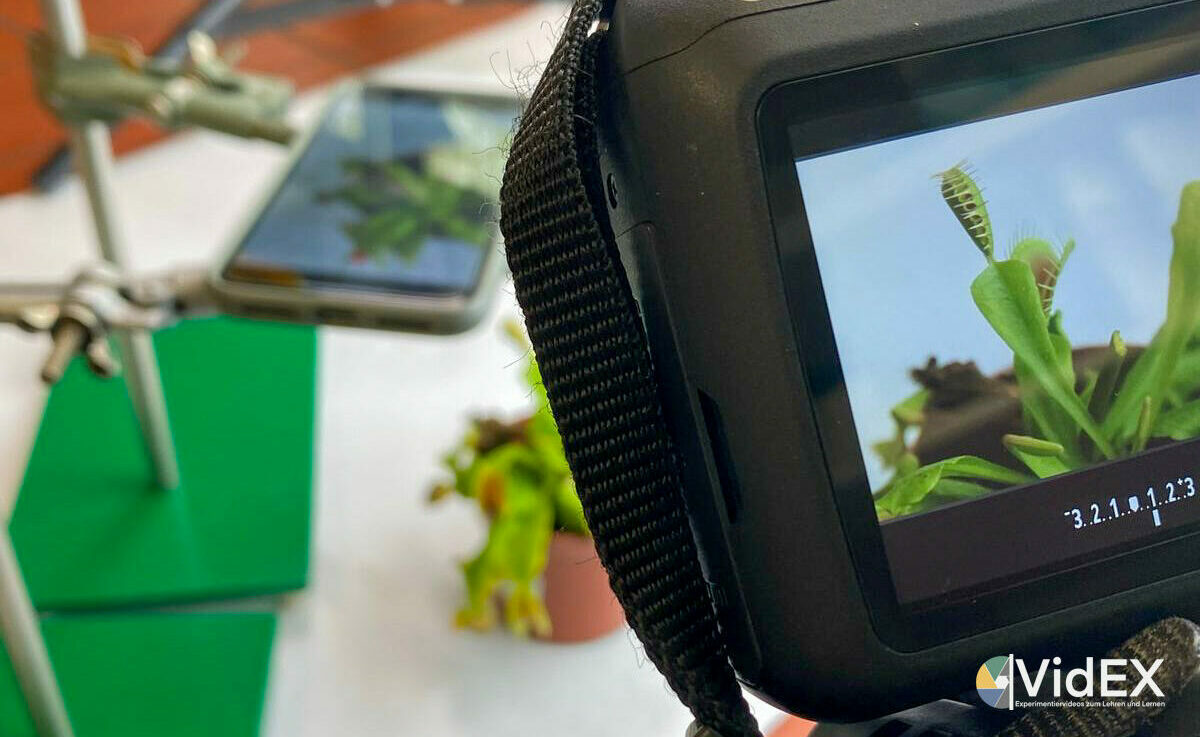
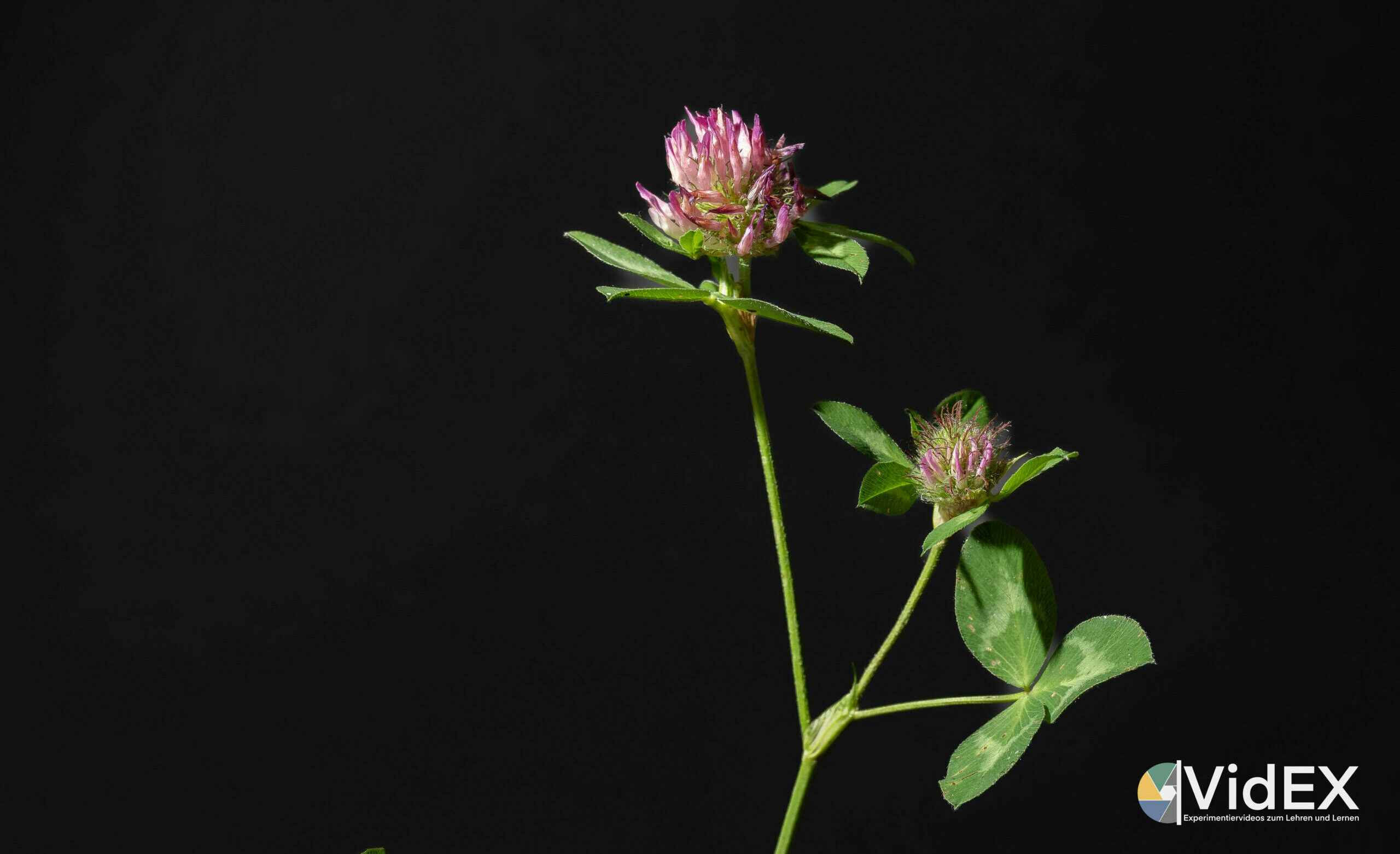
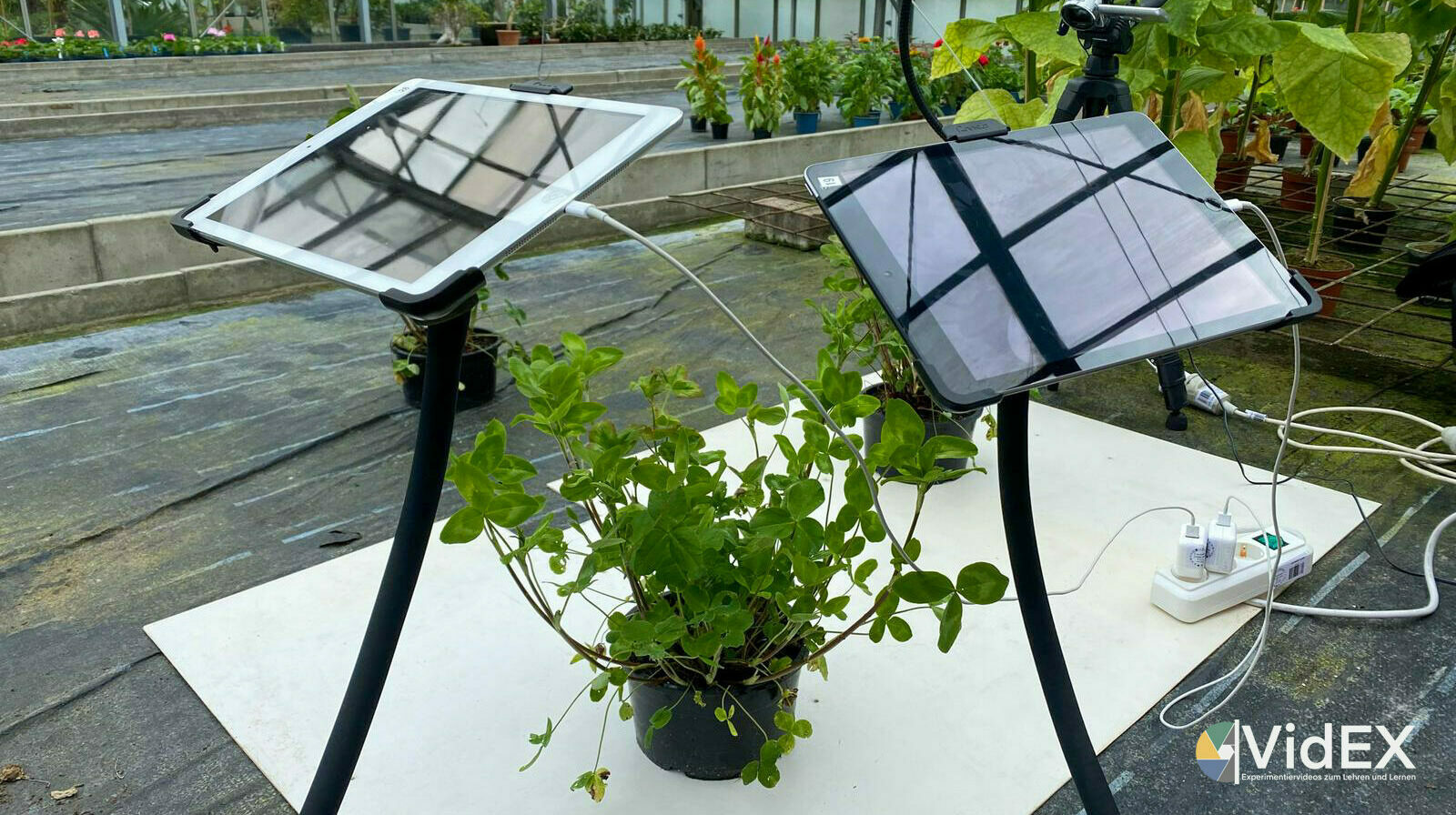
Plants show movements in many ways, but these are often perceived as a supposedly rare occurrence. Plant movements include, for example, growth movements, light-dependent movements and movements triggered by touch or vibration. In this module, learners are offered the opportunity to realise, that plant movement is neither rare nor extraordinary, but in any case, exciting. To discover this themselves, they can observe different plant species phenomenologically with regard to their movements. Afterwards, it would be the right thing to work out the causes and biological background of the movements.
Plants move – is that correct?
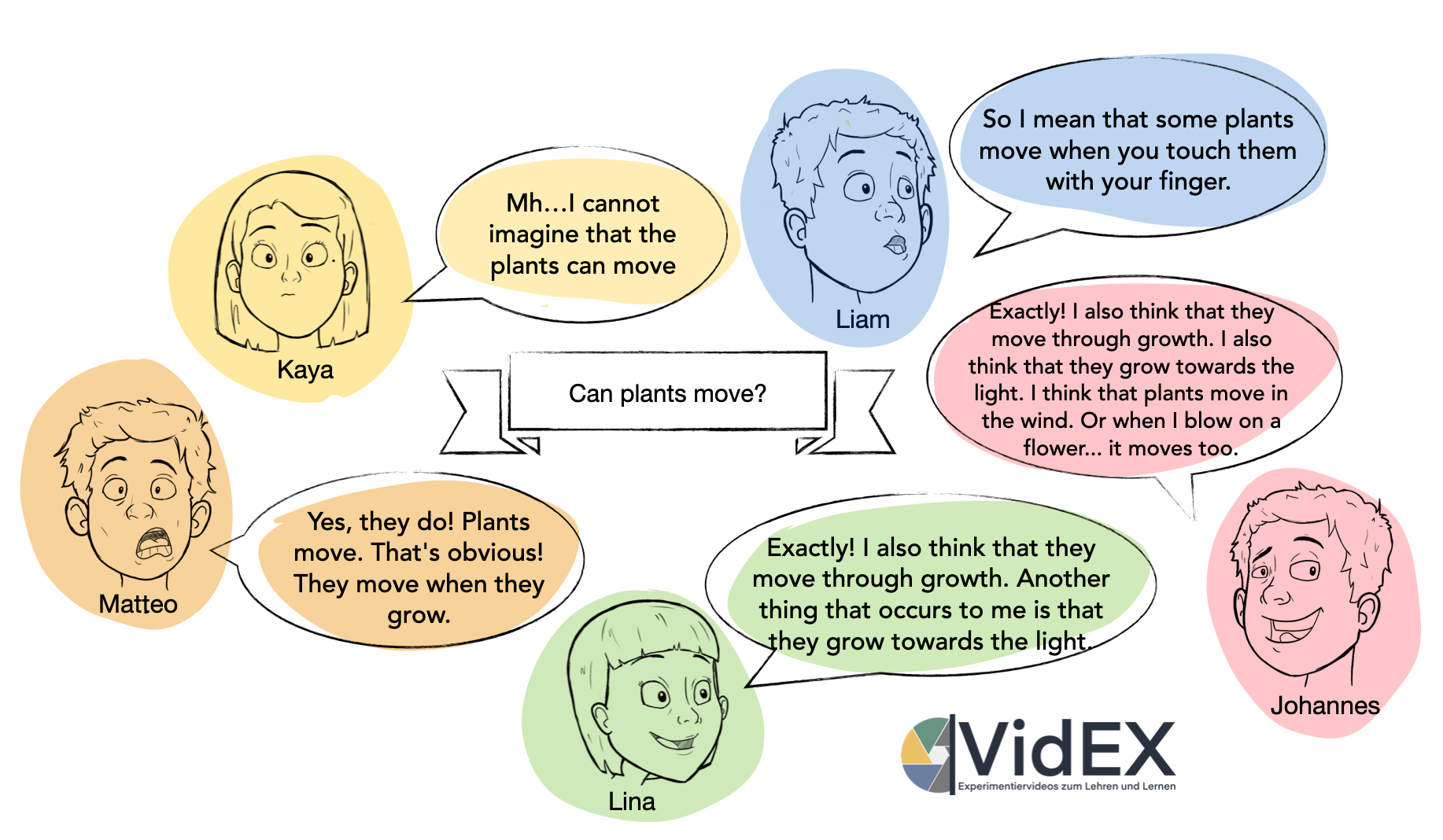
Concept Cartoon with everyday ideas of 5th-7th grade students regarding plant movement
(Cartoon heads by Dajana Tomasiewicz, 2022, CC BY-NC 4.0)
This question can trigger an extensive discussion among the learners, as they have the most diverse ideas regarding this topic. With a problem-oriented introduction, the ‘researcher’s instinct’ is awakened in many: How could we find out if plants move? The ideas in the cartoon are real statements of middle school students, which we collected in a survey together with the University of Siegen.
In this module, the focus is on observation as a scientific method of knowledge. A lot of plant movements can be observed independently: gravitropic movements, photonastic and diurnal movements as well as touch-induced movements.
The movement of plants is often not natural to people but can rather be associated with magic. From the Harry Potter film series, there are numerous examples of plants, moving in magical ways: The Whomping Willow (to the Harry Potter excerpt: 1:20 min – 2:10 min) which can harm approaching creatures with its moving branches, or the Devil´s Snare (to the Harry Potter excerpt: 1:51 min – 2:23 min), which binds and entwines creatures with its tendrils. Moving plants, however, do not only occur in the magical world of Harry Potter but are natural and frequent occurrences in our nature. With this module and the question: How do plants move? the learners can investigate these phenomena.
The idea for this introduction was inspired by Weiß, S. (2003). Botanik mit Harry Potter, Unterricht Biologie, 27 (289), 14-18.
The different plant movements can be divided between small groups of a class or within a small group (group puzzle with a core- and expert groups):
Following on from the research question (How do plants move?), hypotheses can be formulated with the learners. These can relate to the existence of movements and/or the way of movements in general, or they can be explicitly directed at selected plants. The latter requires that the plants to be observed are briefly introduced or shown to the learners and an impulse is given to the trigger of the respective movement in plants. An example would be to combine the picture of the meadow clover with the symbol of a sun or to combine a picture of a plant with a picture of the grain in the case of wheat. Further methodical preparation of the observation includes planning with the creation of an observation protocol by recording, among other things, what is to be observed and for how long.
Observation protocol template
The template is very simple and designed for use in Year 5 with no experience of scientific observation.
The movements to be observed in the selected plants are easy to grasp according to the target group, i.e. the learners can make initial methodological decisions via concrete impulses and gain an impression of scientific work. Thus, the direction of the movement (e.g. sprouting stalk in wheat) and/or the type of movement of selected plant organs (e.g. catch leaf of the Venus flytrap) and/or the duration of a movement (e.g. folding in mimosa leaves) can be the focus of observation. This can be done both qualitatively descriptively or quantitatively in, for example, time intervals.
Tip: There is also an interactive video learning unit for this module (Note: This interactive learning unit is currently only available in german).
The core of the learning unit is the differentiation according to pupils’ ideas, i.e. depending on an assumption about the movement of plants chosen by the pupils at the beginning and based on the pupils’ ideas, they work on one of four learning paths. They can choose between a growth movement, a touch-induced movement, a movement caused by wind and a light-dependent movement. The development of plant movement takes place through the method of observation and is embedded in an exploratory learning process.
The video material “Plant Movement“
Observation of gravitropism
In this video the directional growth of the plant’s organs of a wheat grain (Triticum spec) can be observed with and against gravity.
Observation of thigmonasty/ seismonasty/ traumatonasty
In this video movements of the Venus flytrap (Dionaea muscipula) and the mimosa (Mimosa pudica) can be observed depending on stimulation trough touch, wind and heat.
Movement of the Venus flytrap: 0:06-0:25 s
Movement of the mimosa by wind: 0:26-0:35 s
Movement of the mimosa by other touch and heat: 0:35-0:55 s
Observation of photonasty/ circadian rhythm/ thermonasty
In this video light-dependent inflorescence movement of the dandelion (Taraxacum spec.), the light-dependent and diurnal movements of the meadow clover (Trifolium pratense) and the fire bean (Phaseolus coccineus) can be observed. In addition, the thermonastic movement of the daisy (Bellis perennis) can be observed in relation to change in light.
Movement of the dandelion: 0:05-1:03 s
Movement of the meadow clover: 1:04-1:17 s
Movement of fire bean: 1:18- 2:09 s
Movement of the daisy: 2:10-2:32 s
Observation of circadian rhythm / nyctinastia
In this video, the light-dependent and diurnal movements of the mimosa (Mimosa pudica), which are also known as sleep movements, can be observed. The movements shown in the video, which last about 1 minute, took about 52 hours in reality.
Observation of flower opening movements
In this video, the opening of the flowers of the yellow narcissus (Narcissus pseudonarcissus) can be observed in fast motion. In reality, this flower opening took about 35 hours.
Here you can download images of selected plants (by Bosse Althaus, 2022, CC BY-NC-ND 4.0). They can serve you as initial impulses or help during the hypothesis-forming phase. The concept cartoon is also available in both, a colour- and a black-and-white version.
Authors of this module: In addition to the VidEX team, many other people were involved in this VidEX module as well, without whom it could never been created to this extent. Luisa Henze, is mainly responsible for the module design and the creator of the interactive learning unit. She has enriched the VidEX offer enormously with her thesis and her commitment! Some of the videos were created in cooperation with Dr. Björn Hendel and Richard Sannert (Didactics of Biology, University of Siegen) and we are very grateful for their contributions. Last but not least, Björn and Richard gave us the impetus to deal with plant movements!